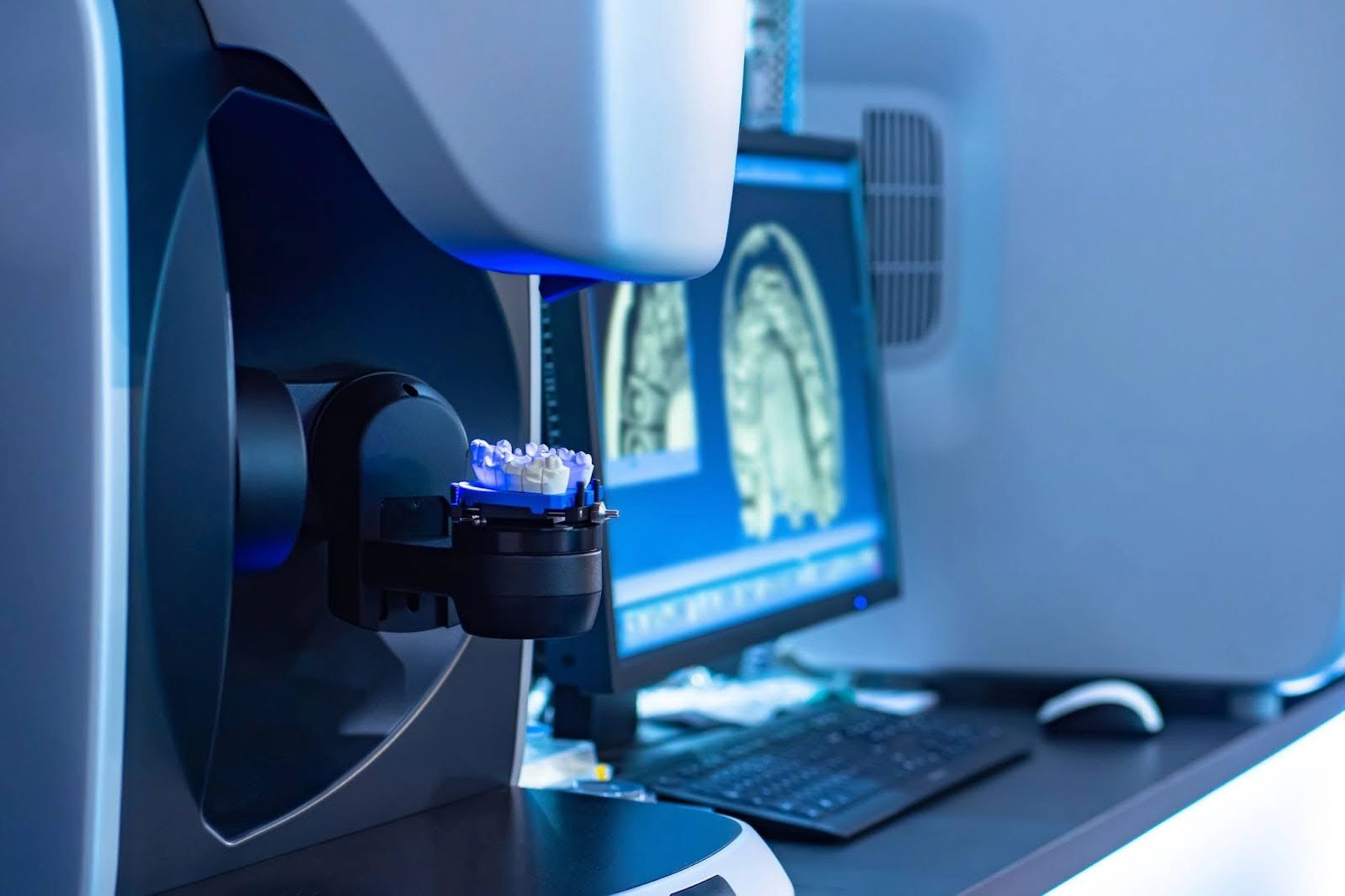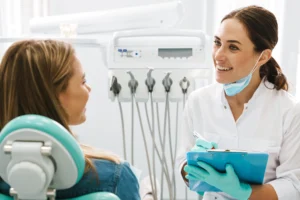In a digitally driven dental practice, lab relationships matter more than ever. Today’s restorations rely on precision scans, digital communication, and material specialization—not just turnaround time. As more practices adopt intraoral scanners, many are discovering that traditional lab setups can limit efficiency and case outcomes.
A strong lab partner should not only handle basic crown and bridge work—they should scale with your practice, specialize in your case types, and help you deliver consistent, high-quality results.
What to Look For in a Digital Dental Lab Partner
A forward-thinking lab partner is more than just a production facility. In today’s landscape, labs are collaborators in restorative outcomes, esthetic planning, and patient satisfaction. Here are the attributes that separate high-performance digital labs from the rest:
- Specialization in Modern Materials: Labs must be proficient with materials like zirconia, lithium disilicate, Valplast, Lucitone, and digital denture bases. General-purpose labs may struggle to deliver consistent results across this range, especially when transitioning from analog to digital workflows.
- Consistent Turnaround Times: Digital workflows are only as fast as the lab supporting them. Look for partners that commit to transparent and reliable production timelines. Ask whether your lab scans cases internally as they move through production to support full traceability and proactive communication.
- Digital Communication Channel: Paper forms and scattered email chains create risk. High-performing labs provide online portals that allow clinicians to track case status, upload files, confirm shades, annotate, and communicate directly with technicians throughout the process.
- Full-Arch and High-Acuity Capability: Many labs claim to handle complex cases like All-on-X, but few specialize in the workflows required to do it well. True high-acuity labs understand photogrammetry, manage passive fit requirements, and support guided surgery—all essential for predictable outcomes in advanced cases.
Transparency: Clinicians should always know where their cases are being fabricated and who is responsible for quality control. A digital lab should provide full visibility into their workflow, technician oversight, and production location, whether the case is fabricated in-house or outsourced.
Why Most “Free Scanner” Lab Models Fall Short
Many free scanner programs lock practices into exclusive lab contracts. That means one lab for all restorations—regardless of their strengths or weaknesses. These models offer no real choice or visibility into the actual lab techs doing the work.
This one-size-fits-all approach can compromise case quality, extend delivery timelines, and erode trust when patients return for adjustments or replacements.
These programs often market themselves as full-service solutions, but in reality, clinicians are removed from important decisions—such as which technician handles complex esthetic work, or whether a denture is fabricated in-house or by a subcontractor. Over time, this can degrade clinical confidence and lead to inconsistent patient outcomes.
Incisive Dental’s Lab Network Model
Incisive takes a different approach. With every scanner, we provide access to a vetted, nationwide network of digital labs—each chosen for their clinical strengths, material expertise, and digital compatibility. These labs cover the full spectrum of restorative and prosthetic needs, from basic crown and bridge to complex full-arch rehabs and high-esthetic veneer work.
Our network is built around three key principles: choice, specialization, and accountability.
- Choice: Practices maintain full control over which lab to use per case. That means selecting a general lab for everyday zirconia crowns, and a dedicated digital denture lab for removable cases—all from the same platform.
- Specialization: Each lab in the network is carefully evaluated for its proficiency in specific workflows—like Lucitone digital dentures, All-on-X restorations, feldspathic veneers, or sleep appliance fabrication.
- Accountability: Our model makes it clear who’s producing each restoration. Labs are accountable for quality, timelines, and communication.
By decoupling scanner ownership from lab exclusivity, Incisive empowers clinicians to route each case to the most appropriate partner without administrative hurdles. Practices gain the flexibility to test, compare, and optimize lab relationships as their needs evolve.
The result is faster turnaround, lower stress, and better clinical outcomes—whether for a single unit or a complex case. And because our labs are digitally integrated, practices benefit from streamlined case submission, real-time feedback, and fewer remake risks.
For high-growth practices or those expanding into new service lines like digital dentures or aligners, this model creates operational freedom without compromising on quality or efficiency.
Choose Flexibility Over Exclusivity
The best lab partner is the one that fits the case—not the one that came with a scanner contract. Incisive Dental’s lab network model puts control back in the hands of the clinician, supporting better results, happier patients, and a more efficient practice.
Our approach is built for growth-minded practices—those that want to scale without sacrificing quality or control.
[Schedule a Call] to learn more about how our lab partnerships work and see how we help practices build smarter, more scalable restorative workflows.



